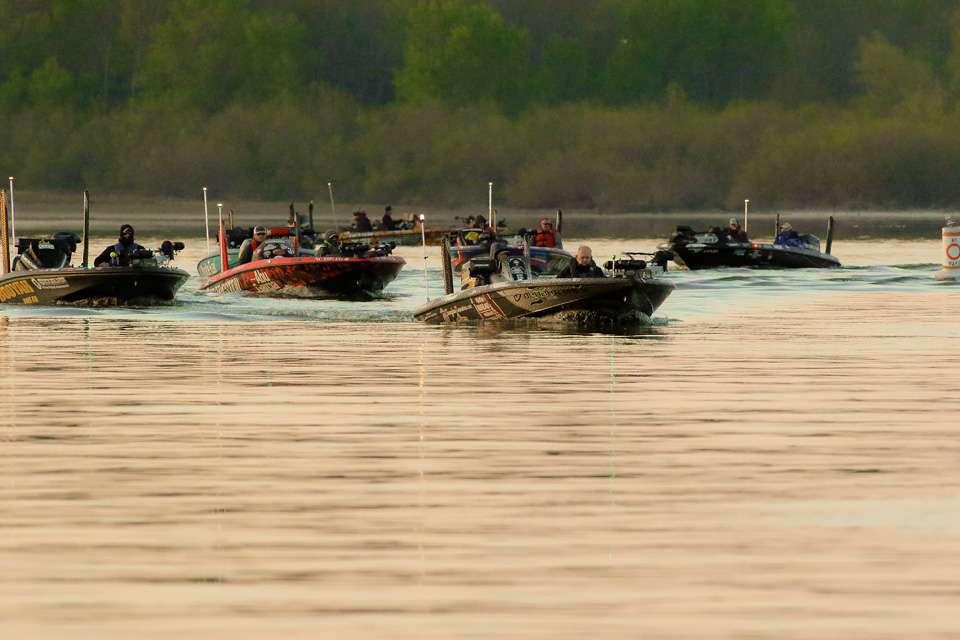
Yesterday while interviewing the anglers at the weigh-in I discovered a reoccurring comment. The importance of finding new water was the common denominator.
That brings up a thought. The inland migration of prespawn largemouth is accelerated under a full moon, warming water temperatures, sunny skies and calm winds. That leaves two options for the spawn chasers among the group of anglers.
Option #1: Bet on the come, grind it out in a prime location for a chosen shoreline to become flooded with a wave of males and females.
Option #2: Run and gun, look for new water, and attempt to intercept incoming spawners along the way.
Betting on the come (Option #1) comes with a risk. If the fish don’t show then you’re out of luck. Being in the hunt for new water is a wiser choice and what got most of the anglers inside the top 50. On the flip side, the reward is being on a spot that reloads with new fish as those move into spawn.
“Grand Lake has been under a lot of pressure with a weekend tournament happening for the last six weeks before we came here.”
I got that feedback from James Elam, an early tournament favorite from Tulsa. Elam went on to tell me that areas can’t replenish fast enough due to all the angling pressure.
Bradley Roy figured out Elam’s logic on his own.
“The lake is fishing smaller because most everyone is on the bank milking it for all it’s got,” he observed. “There aren’t enough fish moving up to go around for everyone.”
Staying on the go, covering areas, increases the odds of lining up with the perfect timing for a wave of fish.
Seth Feider is running the second option. He’s opted for a junk fishing pattern with Texas-rigged soft plastics as his lure choice.

